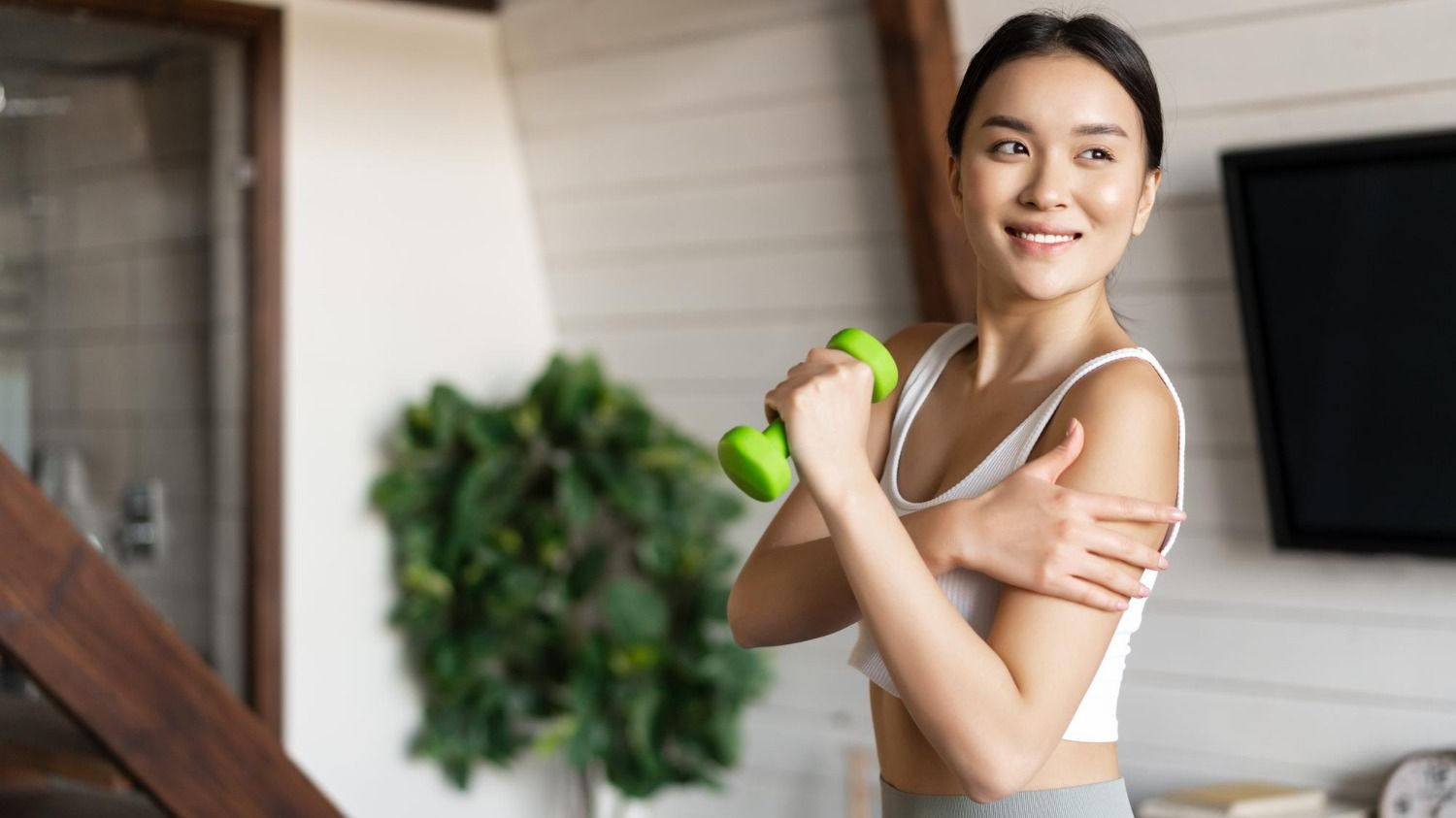What is physical fitness? Definition, components & benefits
Explore the five key components of physical fitness, cardio, strength, flexibility, endurance, body composition, and learn how studios using Rezerv can craft well-rounded programs.
.jpg)
Source: Jonathan Borba on Pexels
When was the last time you thought about your fitness beyond just “hitting the gym” or “going for a run”? For most of us, physical fitness is something we know we should care about, but we don’t always pause to understand what it really means, or how much it impacts our daily lives.
The truth is, physical fitness isn’t just about having toned muscles or being able to run a marathon. It’s about feeling good in your own body, moving with ease, and having the energy to keep up with everything life throws at you.
At its core, physical fitness is a state of health and well-being that allows you to perform daily tasks with energy, reduce health risks, and keep your body functioning at its best. Think of it as the foundation for a balanced, healthy lifestyle, it supports not just your physical performance, but also your mental clarity, stress levels, and even your long-term quality of life.
And here’s the interesting part: fitness isn’t one-size-fits-all. It’s not about following the latest trend or chasing a “perfect” body. Instead, it’s about understanding the key components that make up physical fitness, like cardiovascular endurance, strength, flexibility, and more, and creating a routine that works for your goals and lifestyle. When you look at fitness this way, it becomes less about short-term results and more about building habits that last.
In this article, we’ll break down exactly what physical fitness means, explore its five key components, and highlight the benefits it brings to your health and everyday life. Plus, we’ll show you how fitness studios can design balanced, results-driven classes with the help of smart scheduling tools like Rezerv. By the end, you’ll see fitness not as another item on your to-do list, but as an investment in a healthier, more resilient version of yourself.
What Is Physical Fitness?
Physical fitness is more than just hitting the gym or breaking a sweat, it’s about how well your body can handle daily tasks with energy, efficiency, and resilience. In simple terms, it’s a state of health and well-being that allows you to move, work, and play without feeling overly tired or at risk of injury.
At its core, physical fitness combines different elements of health, including heart and lung function, muscle strength, flexibility, and body composition. When these areas are in balance, your body doesn’t just perform better during workouts, it also supports everyday activities like climbing stairs, carrying groceries, or even just sitting at a desk without discomfort.
But here’s the thing: fitness isn’t only about physical performance. Research shows it’s closely tied to overall well-being, from boosting mood and lowering stress to reducing the risk of chronic illnesses like diabetes and heart disease. In fact, staying active can add years of quality life by helping your body stay strong and your mind sharp.
Think of physical fitness as the foundation of a healthier lifestyle. It’s not about striving for perfection, but about creating a body that supports you, today, tomorrow, and well into the future.
What Is Physical Fitness?
Physical fitness is more than just hitting the gym or breaking a sweat—it’s about how well your body can handle daily tasks with energy, efficiency, and resilience. In simple terms, it’s a state of health and well-being that allows you to move, work, and play without feeling overly tired or at risk of injury.
At its core, physical fitness combines different elements of health, including heart and lung function, muscle strength, flexibility, and body composition. When these areas are in balance, your body doesn’t just perform better during workouts, it also supports everyday activities like climbing stairs, carrying groceries, or even just sitting at a desk without discomfort.
But here’s the thing: fitness isn’t only about physical performance. Research shows it’s closely tied to overall well-being, from boosting mood and lowering stress to reducing the risk of chronic illnesses like diabetes and heart disease. In fact, staying active can add years of quality life by helping your body stay strong and your mind sharp.
Think of physical fitness as the foundation of a healthier lifestyle. It’s not about striving for perfection, but about creating a body that supports you—today, tomorrow, and well into the future.
The 5 Key Components of Fitness
When people talk about being “fit,” it’s easy to picture someone running marathons or lifting heavy weights. But true physical fitness isn’t about excelling in one area—it’s about balance. To get a complete picture, experts break fitness down into five key components. Together, they give us a framework for building routines that support both performance and long-term health.
1. Cardiovascular Endurance
This is all about how well your heart, lungs, and blood vessels deliver oxygen during sustained activity. Think of jogging, cycling, or swimming, if you can keep going without feeling completely drained, that’s cardiovascular endurance at work. Building it improves heart health, lowers the risk of chronic disease, and gives you the stamina to enjoy active days without fatigue.
2. Muscular Strength
Strength is your body’s raw power, the ability to push, pull, or lift heavy objects. Whether it’s carrying a box of groceries or squatting at the gym, muscular strength makes those tasks easier. Training with resistance, like weights or bodyweight exercises, not only builds muscle but also improves posture, boosts metabolism, and protects your joints.
3. Muscular Endurance
While strength is about maximum effort, muscular endurance is about consistency—your muscles’ ability to keep working without tiring. Picture holding a plank or climbing several flights of stairs. Endurance allows your muscles to repeat movements over time, supporting everyday activities and helping prevent fatigue or injury.
4. Flexibility
Flexibility refers to the range of motion in your joints. It’s what helps you bend down to tie your shoes or twist to grab something from the backseat. Stretching, yoga, and mobility exercises improve flexibility, which reduces stiffness, prevents injuries, and keeps your movements smooth and efficient as you age.
5. Body Composition
This is the ratio of fat to lean mass in your body, muscles, bones, and organs. It’s not just about appearance; a healthy body composition reduces the risk of issues like heart disease and diabetes. By combining strength training, cardio, and balanced nutrition, you can shift your body toward more lean mass and less excess fat, supporting both health and performance.
Benefits for Daily Life & Health
The real value of physical fitness goes far beyond looking toned or athletic—it’s about how it makes you feel and function every single day. When you’re fit, everyday tasks feel easier, your energy levels stay higher, and your body becomes more resilient against stress and illness.
One of the biggest benefits is better heart health. Regular physical activity strengthens your cardiovascular system, helping your heart pump blood more efficiently and lowering the risk of heart disease, high blood pressure, and stroke. Even small changes, like walking more often, can have a big impact on long-term heart health.
Fitness also plays a huge role in mental well-being. Exercise stimulates the release of endorphins, often called “feel-good hormones”, that naturally reduce stress, anxiety, and even symptoms of depression. Studies show that staying active also sharpens memory and focus, making it easier to stay productive and mentally clear throughout the day.
Another key benefit is weight management. By combining cardio, strength training, and balanced nutrition, physical fitness helps regulate body fat, build lean muscle, and boost metabolism. This not only supports a healthier body composition but also reduces the risk of obesity-related conditions like type 2 diabetes.
Don’t forget the importance of strength and endurance in everyday life. Carrying heavy groceries, climbing stairs, or even sitting at a desk for long periods becomes easier when your muscles and stamina are well-developed. For older adults especially, maintaining strength and endurance reduces the risk of falls and keeps independence for longer.
Finally, fitness is one of the most effective ways to prevent chronic diseases. Research shows that people who exercise regularly are significantly less likely to develop conditions such as diabetes, osteoporosis, and certain cancers. It’s a long-term investment that pays off in both quality of life and longevity.
In short, physical fitness doesn’t just change your body, it transforms how you live. It makes the everyday feel lighter, the future healthier, and your overall lifestyle more balanced.
How Fitness Studios Can Design Balanced Classes Using Rezerv Scheduling
For fitness studios, the challenge isn’t just about offering classes, it’s about creating the right mix that helps members build all five components of fitness. A well-rounded program ensures clients aren’t just working on one area, like strength or cardio, but improving their overall health and performance. This is where smart scheduling makes all the difference.
With Rezerv’s scheduling tools, studios can design programs that balance cardio, strength, endurance, flexibility, and recovery. For example, a studio might structure its week with high-intensity interval training (HIIT) sessions for cardiovascular endurance, strength classes for building muscle, yoga or Pilates for flexibility, and small group training for muscular endurance. The platform makes it easy to spread these classes out in a way that keeps offerings consistent and accessible to all members.
Another big advantage is customisation for different fitness levels. Not every client has the same goals, some want weight loss, others need injury prevention, and many just want to feel stronger day to day. Rezerv allows studios to schedule classes that cater to these different needs, while still making sure the core components of fitness are covered.
And from the member’s perspective? Balanced scheduling removes the guesswork. Clients can log into the studio’s booking system, see a clear variety of classes, and build their week knowing they’re working on all aspects of fitness. This not only improves results but also keeps people motivated, since variety prevents routines from becoming stale.
In short, Rezerv helps studios go beyond just “filling time slots.” It gives them the tools to create structured, intentional programs that support long-term fitness, improve client satisfaction, and boost retention.
Conclusion
Physical fitness isn’t just about gym sessions or chasing aesthetic goals, it’s the foundation of a healthier, more energetic life. By understanding what fitness truly means and focusing on its five key components, you can build a balanced approach that strengthens the body, sharpens the mind, and supports long-term well-being.
The benefits are undeniable: improved heart health, greater strength and endurance, better weight management, enhanced flexibility, and reduced risk of chronic disease. But beyond the science, fitness is about freedom, the freedom to move with ease, to enjoy daily activities without strain, and to feel confident in your body at every stage of life.
For fitness studios, the opportunity lies in designing programs that bring all of these elements together. With tools like Rezerv, it’s easier than ever to create structured schedules that balance cardio, strength, flexibility, and recovery, ensuring clients achieve real, lasting results.
At the end of the day, fitness isn’t about perfection, it’s about progress. Every step, every class, every healthy choice adds up to a stronger, more resilient version of yourself. And that’s something worth investing in.

